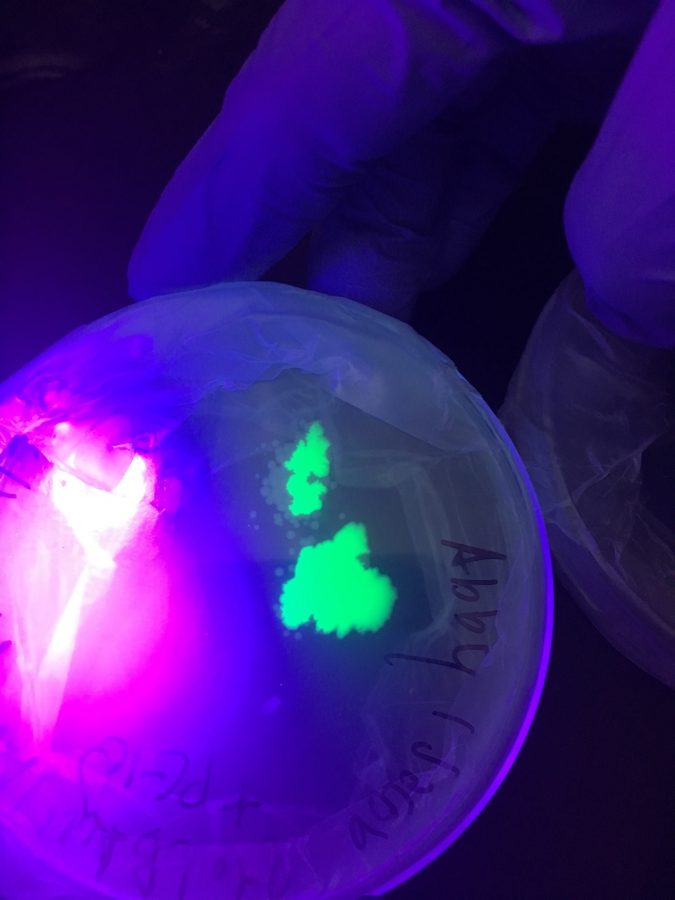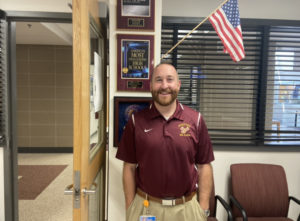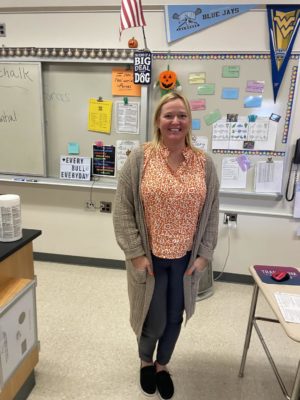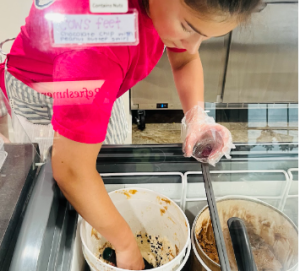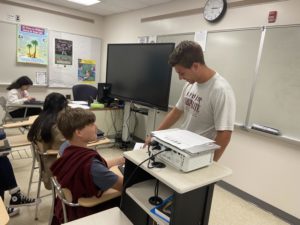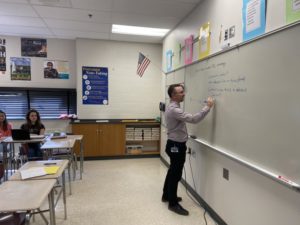Bacteria genetically altered to glow in biotechnology course
Bacteria grown in a culture plate engineered to glow green by biotechnology students.
January 13, 2017
In today’s society, it seems as though genetic engineering can be found everywhere. From GMOs in our food to advanced medical treatments, altering the genes of life has woven itself into the fabric of our world, and continues to grow as research advances. The methods, however, of how these scientists go about manipulating an organisms’ DNA may seem far out of reach or incomprehensible, but students right here inside our building are performing it in the classroom.
The honors biotechnology course running on period 5B heavily focuses on lab experience and teaching the basic techniques involved with genetic engineering. “Biotech provides authentic opportunities for students to perform cutting edge scientific techniques which can advance society in a variety of ways,” biotechnology teacher Thomas Keller said. “So much current research involves genetic engineering, so letting students figure out how to alter the genetics of living organisms to benefit society is pretty cool.”
In their most recent lab, students introduced a protein called pGLO to the DNA of E. coli bacteria. “It’s a plasmid (a circular piece of DNA) that contains the gene for a green fluorescent protein which makes things glow,” biotech student Beata Assadi (’19) said. The goal was to make the microbes glow in the presence of UV light, a process that took days.
First, culture dishes were prepared to provide a medium in which the bacteria could grow. These cells then underwent a heat-shock process, creating pores that let foreign DNA enter the cell. After the DNA was assimilated, the bacterial cells were able to pass on the glowing gene through reproduction to their offspring within the culture plates, creating colonies of glowing E. coli.
“It sounds very complicated to force cells to intake exogenous DNA, but when it comes down to it, the lab really wasn’t very difficult,” biotech student Josh Blake (’17) said. Blake had completed a similar transformation lab in AP biology about a month before.
To some students, this experience had an impact on their ideas of the field. Biotech student Holland Brown (’17) commented “it’s amazing what we can do with what we know. It’s also amazing what little we know about genetics as a society—this lab made me realize this.”
This lab also emphasized the potential biotechnology has in advancing society. “Biotech allows us to solve some of mankind’s biggest problems, including lack of sustainable food sources,” Blake said.
To biotech student Olivia Holbrook (’19), altering life is one of the best things about biotechnology. “I like to play god,” Holbrook said.
For more on the process of bacterial transformation: https://www.addgene.org/plasmid-protocols/bacterial-transformation/


